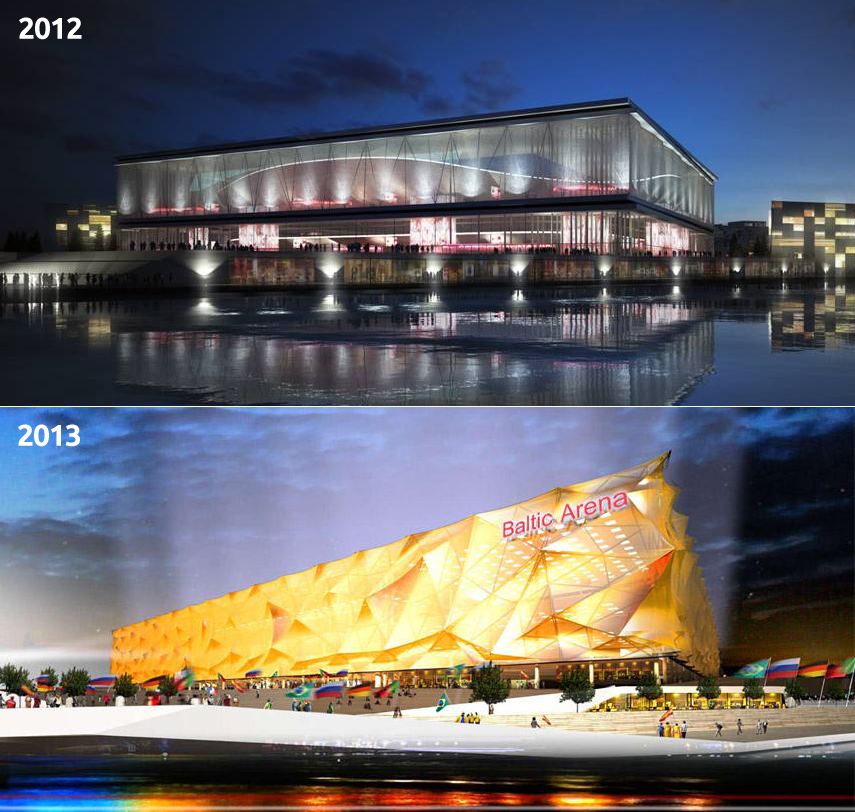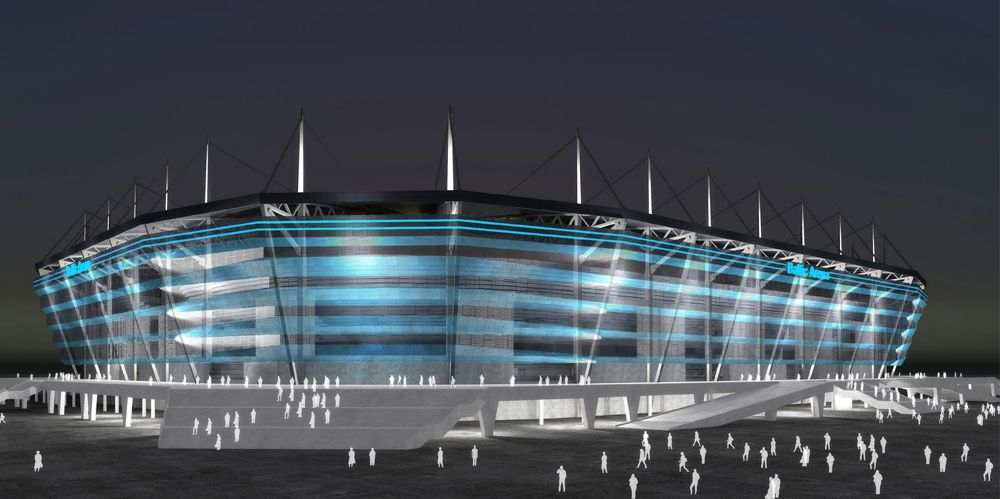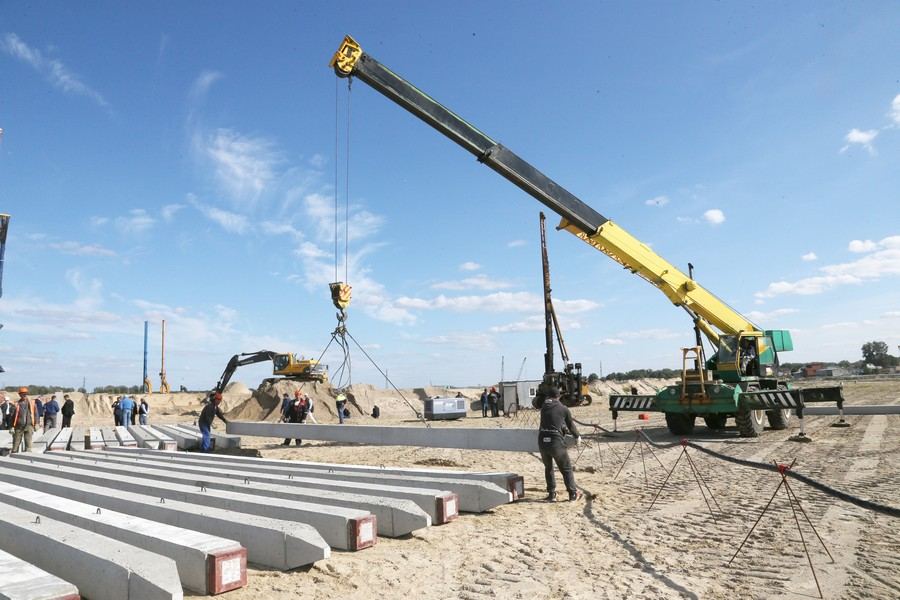New construction: Kaliningrad last city to take off
source: StadiumDB.com; author: michał
 After numerous delays it’s finally ongoing now. Grounbreaking in Kaliningrad took place on Friday and now the World Cup’s least impressive stadium should begin to grow.
After numerous delays it’s finally ongoing now. Grounbreaking in Kaliningrad took place on Friday and now the World Cup’s least impressive stadium should begin to grow.
Advertisement
Though construction is officially ongoing for just two full days, this stadium’s history dates back to 2012. This is when design competition was held and won by French atelier Wilmotte & Associes with its unique idea.
The Kaliningrad stadium was to hold 45,000 people, have 20,000 temporary seats and once those would be dismantled the entire roof could be lowered. Adding to that Russia’s second retractable roof over the field was to be built here (first one in St. Petersburg).

That scheme was later taken up by Mostovik, company responsible for delivering the final stadium design documentation. But Mostovik went bankrupt in 2013 and the project scrapped. Not only Mostovik’s bankruptcy was the problem as the entire scheme (with indoor sports halls added in each corner) proved beyond the financial capacity of organisers.
Throughout 2014 and early 2015 work was ongoing on this new project, this time as easy to build and as cheap as possible. FIFA even gave green light for the capacity to drop by 10,000 (35,000 seats for the 2018 World Cup, 10,000 temporary) in order to help with the challenge.

At what price?
In an attempt to cut cost, all possible subcontractors were selected domestically and any unnecessary imports were cut from the project. The stadium’s final design is indeed very simplistic and pragmatic, based on simple prefabs.
And even with these efforts the price might prove high when you compare values in rubles. Initial estimate gave the project some RUB 10 billion, in 2014 it was already at around 15 billion and recently even the contractor suggested 17.5 bn might not be enough.
This sounds very concerning, a literal 75% increase in budget despite all the cost-cutting. But realistically the stadium’s price isn’t all that bad. Due to the Russian currency’s collapse today the 17.5 bn sum represents some $257 million, meanwhile back in 2012 the initial sum of 10 bn was roughly $315 million.
Location controversy
As if the project wasn’t troubled enough, the desired location on October Island proved problematic as well. While picturesque, the place is a wetland and so no less than 7,000 piles need to be stuck into the ground (we also found a 12,500 pile number, but unable to confirm).
This increases cost and time and time, but despite criticism from the sports ministry local organisers decided to stick with the place, where enabling works were already carried out a couple years back. Not only for the stadium itself, because the World Cup arena is expected to begin a much wider regeneration with residential and commercial quarters, currently expected to cover some 140 hectares.
Later, later, not too late?
Construction was expected to start earlier this year, then in the summer. But the date of August 10 wasn’t met and finally official installation of the first pile happened on Friday, Sept 11. This year only ground works will be carried out, but we should see the structure growing in early 2016.

Kaliningrad is thus the very last host-city to get its stadium under construction and time is scarce. FIFA set the deadline of December 2017 for all stadiums to be ready and this is when Kaliningrad should deliver theirs. Theoretically any slip might cost the city its place in the 2018 World Cup lineup, but there’s still some safety buffer. As it was in South Africa and Brazil, FIFA does allow extensions of the deadlines if the host stadium is safe to be ready and tested before the summer tournament.
Advertisement

 StadiumDB
StadiumDB